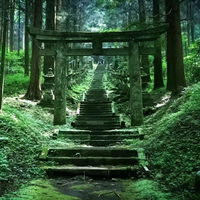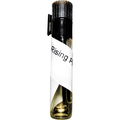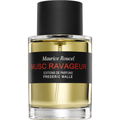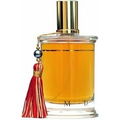05/20/2025

ClaireV
731 Reviews

ClaireV
1
Unusual rose attar
Musk Rose Attar, a finalist in the 2016 Art & Olfaction Awards, does not contain any animal musk but instead focuses on recreating the aroma of the musk rose (rosa moschatus), a species of rose that is very rarely distilled. Unusually, the perfumer chose a Russian rose de mai otto to be the main building block to recreate the aroma of the musk rose. The essential oil from this rose varietal possesses a tart, green aroma with a frothy texture that makes one think of lace doilies and Victorian cuffs. There are three distinct phases to this mukhallat, with the first two playing out over the course of three to four hours, and the last phase lasting for a good three hours past that. The opening is bright, sharp, and tannic. Paired with a touch of oud in the topnotes, the rose rings out in a high-pitched volley of rosy lime peel notes over wood varnish and black tea leaves. The duet is fantastic – fresh but pungent.
The second phase focuses on champaca. After the first half hour, the champaca flower starts to make its presence known. Often, champaca can smell like a muskier, headier version of magnolia, but in Musk Rose Attar, it takes on a boozy, fruity edge reminiscent of fermented apple peel or apricot schnapps. Slowly, the champaca seems to swell, becoming both sweeter and creamier, filing down the sharp elbows left by the angular rose-oud pairing. There are moments when, true to champaca being the origin of the word ‘shampoo’, the note smells more like a luxurious apple-and-rose scented shampoo than a flower. Still, the boozy, jammy, fermented nuances in the champaca gives the mukhallat an adult edge that stops it from smelling like a cheap drugstore product. The floral element is clean, but also sensual and full-bodied. In fact, this is the best use of champaca I have smelled in mukhallat form.
The third and final phase seems to go on forever, carrying the torch long after the bright rose-lime notes and the creamy-fruity champaca notes have died away. The rump of the scent smells, well, incredibly rump-ish. Like the old school style of neo-retro Italian perfumery espoused by Bogue and O’Driu, it features an authentically musky drydown that seems to reference ambergris, deer musk, civet, and castoreum, a remarkable feat when one considers that none of these materials have actually been used here. How, then, has this extraordinary muskiness been achieved? In fact, it all comes from plant-based sources, specifically by way of a Hina musk attar, the traditional Indian shamama distilled from hundreds of different aromatic materials, including charila (Indian oakmoss), henna flower, ambrette seed, herbs, vetiver root, saffron, davana, and kewra (screwpine flower). Attar makers rarely have the time or economic motivation to make shamama in the old manner anymore, and they definitely do not have the sandalwood oil. A genuine, traditionally-made hina musk attar costs in the region of several thousand dollars per kilo, even within India itself, where prices for attars tend to be at their least inflated.
The last element – kewra – is otherwise known as pandan, that sweet, green leaf that gives such a sweet, piercing floral flavor to all sorts of South East Asian dishes and syrups. To my nose, apart from the vegetal, musky thickness contributed by the shamama, the most prominent note in the drydown of Musk Rose Attar is the pandan, which, when combined with the rose, gives a very traditional Indian flavor to the finish.
The second phase focuses on champaca. After the first half hour, the champaca flower starts to make its presence known. Often, champaca can smell like a muskier, headier version of magnolia, but in Musk Rose Attar, it takes on a boozy, fruity edge reminiscent of fermented apple peel or apricot schnapps. Slowly, the champaca seems to swell, becoming both sweeter and creamier, filing down the sharp elbows left by the angular rose-oud pairing. There are moments when, true to champaca being the origin of the word ‘shampoo’, the note smells more like a luxurious apple-and-rose scented shampoo than a flower. Still, the boozy, jammy, fermented nuances in the champaca gives the mukhallat an adult edge that stops it from smelling like a cheap drugstore product. The floral element is clean, but also sensual and full-bodied. In fact, this is the best use of champaca I have smelled in mukhallat form.
The third and final phase seems to go on forever, carrying the torch long after the bright rose-lime notes and the creamy-fruity champaca notes have died away. The rump of the scent smells, well, incredibly rump-ish. Like the old school style of neo-retro Italian perfumery espoused by Bogue and O’Driu, it features an authentically musky drydown that seems to reference ambergris, deer musk, civet, and castoreum, a remarkable feat when one considers that none of these materials have actually been used here. How, then, has this extraordinary muskiness been achieved? In fact, it all comes from plant-based sources, specifically by way of a Hina musk attar, the traditional Indian shamama distilled from hundreds of different aromatic materials, including charila (Indian oakmoss), henna flower, ambrette seed, herbs, vetiver root, saffron, davana, and kewra (screwpine flower). Attar makers rarely have the time or economic motivation to make shamama in the old manner anymore, and they definitely do not have the sandalwood oil. A genuine, traditionally-made hina musk attar costs in the region of several thousand dollars per kilo, even within India itself, where prices for attars tend to be at their least inflated.
The last element – kewra – is otherwise known as pandan, that sweet, green leaf that gives such a sweet, piercing floral flavor to all sorts of South East Asian dishes and syrups. To my nose, apart from the vegetal, musky thickness contributed by the shamama, the most prominent note in the drydown of Musk Rose Attar is the pandan, which, when combined with the rose, gives a very traditional Indian flavor to the finish.




 Cambodian oud
Cambodian oud Champaca flower
Champaca flower Henna
Henna Musk
Musk Mysore sandalwood
Mysore sandalwood Rose
Rose Russian Rosa centifolia
Russian Rosa centifolia


























